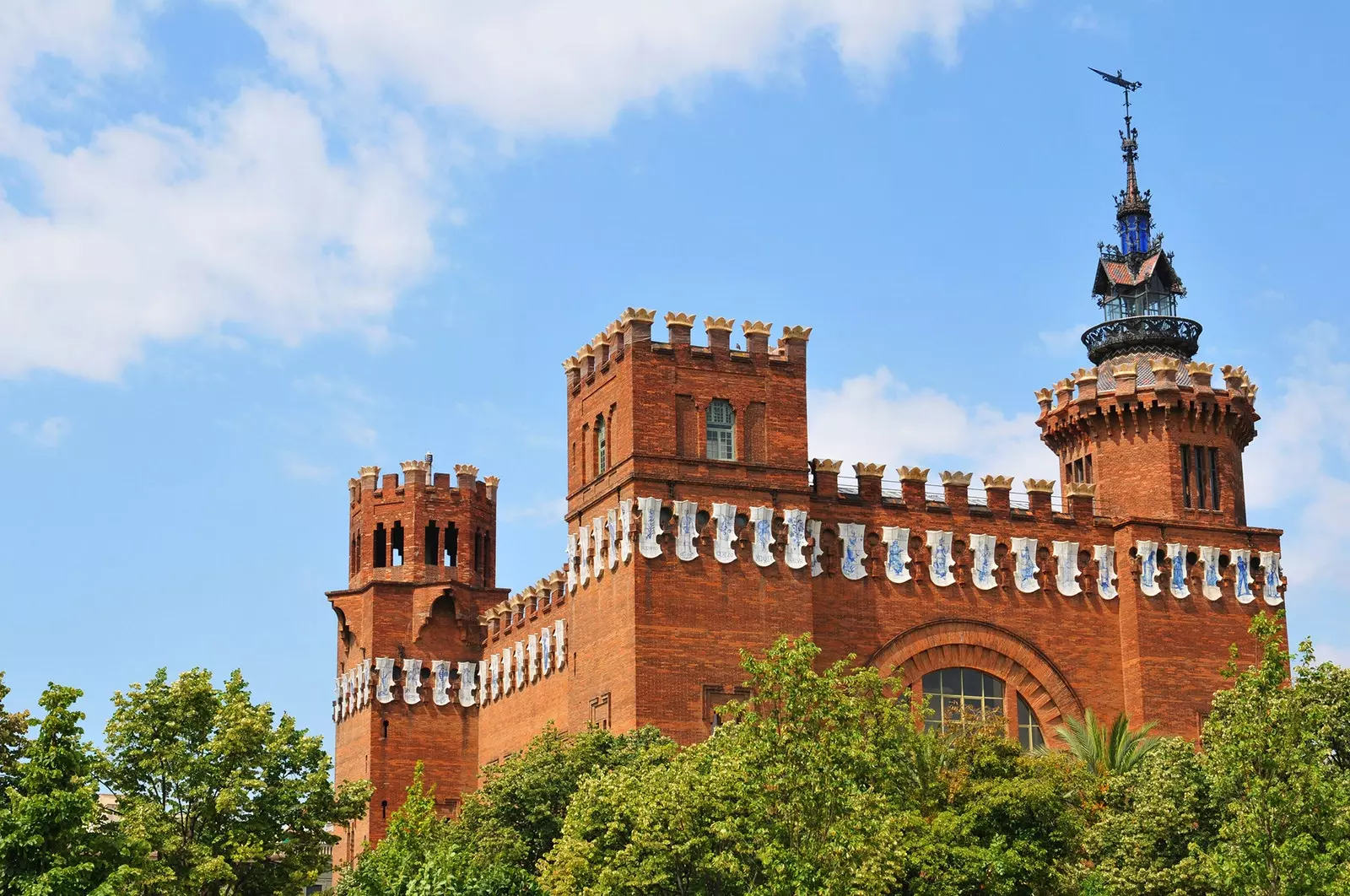
Here Freemasonry makes its debut. discreetly of course
before the question " ** what words come to mind when you talk about Freemasonry? " _ ,**_ surely we think in terms like "money", "sect", "occultism", "rituals", "conspiracy", "demon", "Franco", "secrets"... At least, those were the answers of the majority of the attendees route through Masonic Barcelona that Saturday morning.
few talked about “search”, “fellowship”, “cathedrals” or “knowledge”. A lot of loose black legend around this discreet, not secret, society.
They are not a sect , nor do they offer sacrifices to the devil in the middle of a great orgy. Nor do they conspire to dominate the world from the highest spheres.
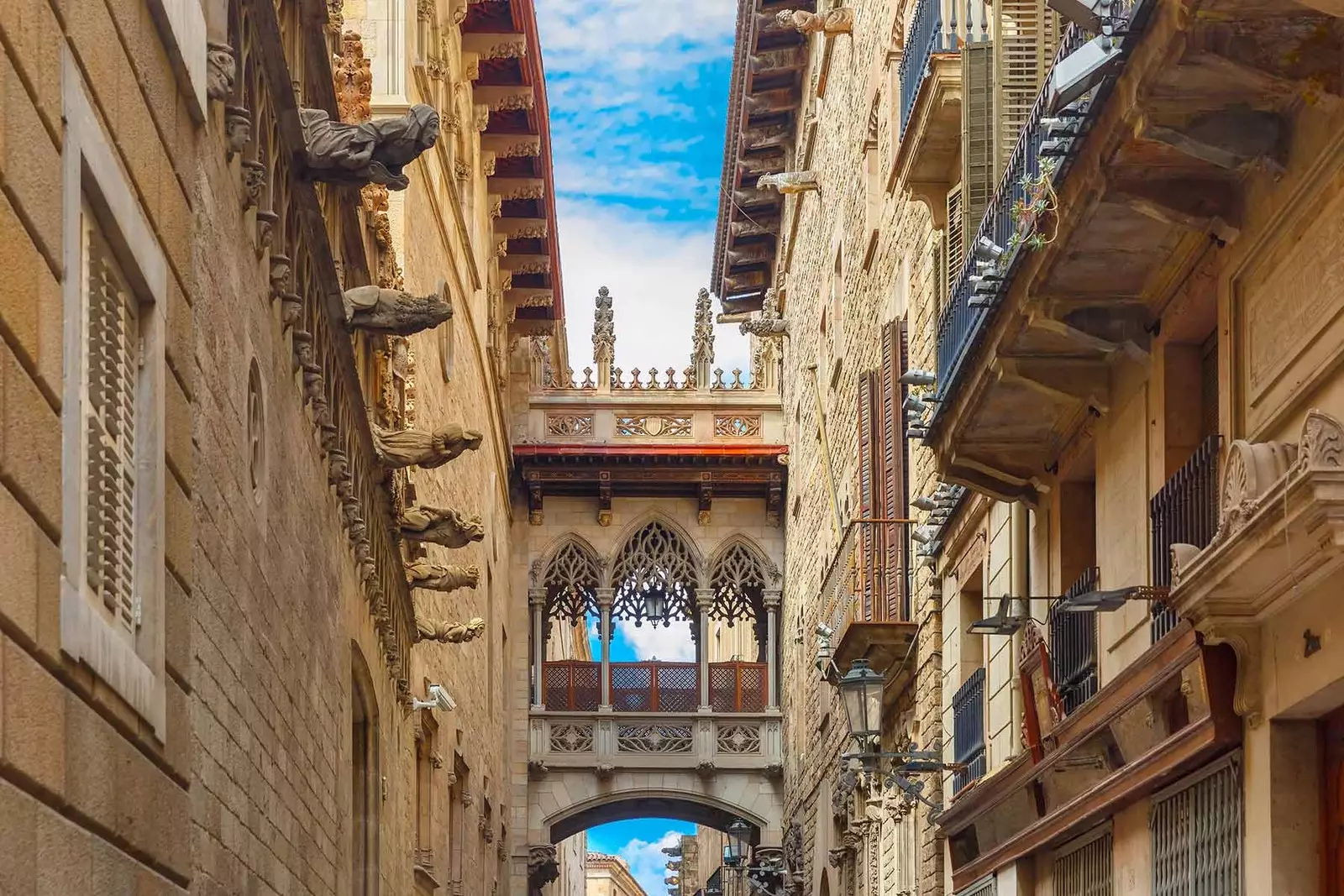
A walk down Carrer Bisbe
Masons are not as many things as we usually believe, but there are many others that we do not know. And if there is a city where to follow in his footsteps, learn a little more about them and banish old prejudices, this is Barcelona.
Barcelona is hermetic and masonic, without a doubt. In fact, It is where the largest number of Freemasons in all of Spain is found. : of about 5,000 that there are in all the Spanish territory, approximately about 2,000 they are here.
Although the city does not have as many symbols as other European ones, there are still some vestiges who survived those years when, like the communists and homosexuals, they were bloodily persecuted by the Franco regime.
The dictator had a brother of his, Ramón Franco, among the Freemasons . They say that, moved by revenge after having tried to enter this society twice and been rejected and alluding that he was the object of a Judeo-Masonic conspiracy that was attacking his person , Not only he ordered to imprison or disqualify the members of the lodges , but he also gave instructions to shoot them and remove their symbols from buildings, monuments and cemeteries.
We could almost consider it miraculous that the arus library, at 26 Passeig de Sant Joan and the place where we start this route, follow intact.
The library was originally owned by the journalist and playwright Rossend Arús, the great promoter of Freemasonry in Catalonia in the mid-19th century.
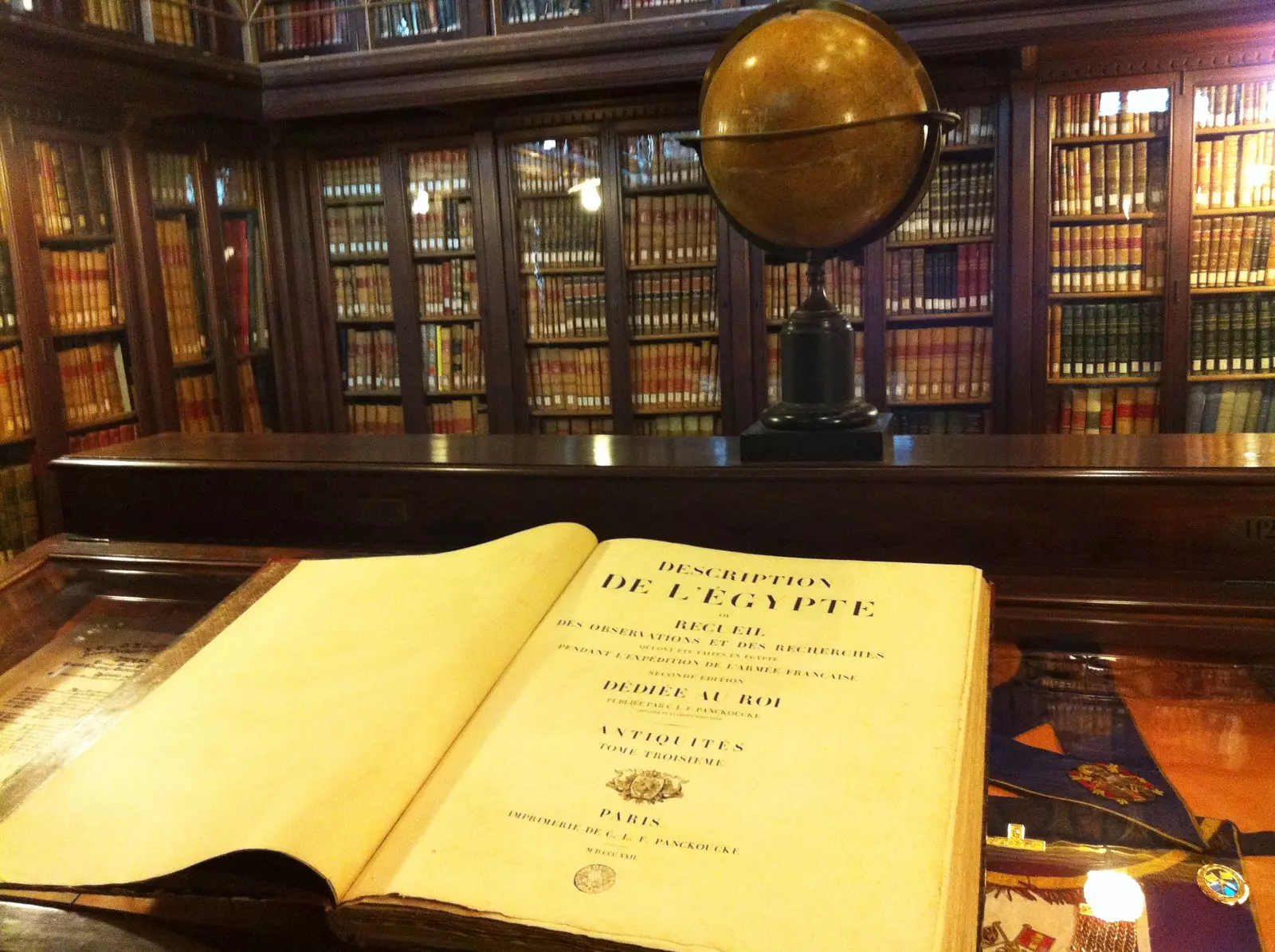
Interior of the Arús Library
When he died without issue, he established in his will that his residence be donated to the city with the intention to train the working class.
Freemasonry, anarchism and labor movement are the three great specialties of him. He was, moreover, the first public library in the city and, as a symbolic act, each new Freemason member is given a card from the Arús Library.
Despite the Francoist police seizure order, the library was never requisitioned, it was just closed, and someone, who must have been very influential, took care that nothing happened to it until, in the 1960s, it was reopened.
Small, with noble wood furniture and accessed through a majestic staircase with Ionic columns, it could be said that, In addition to a library, it is a museum.
The ground is like a chessboard, A compass and a square They are located above the shields of the different Catalan lodges and at the entrance, a replica of the Statue of Liberty.
All of them, symbols associated with Freemasonry . Also the Statue of Liberty, yes. Well, it is related to freedom enlightening the people and the French Revolution, a model to follow for the labor movement.
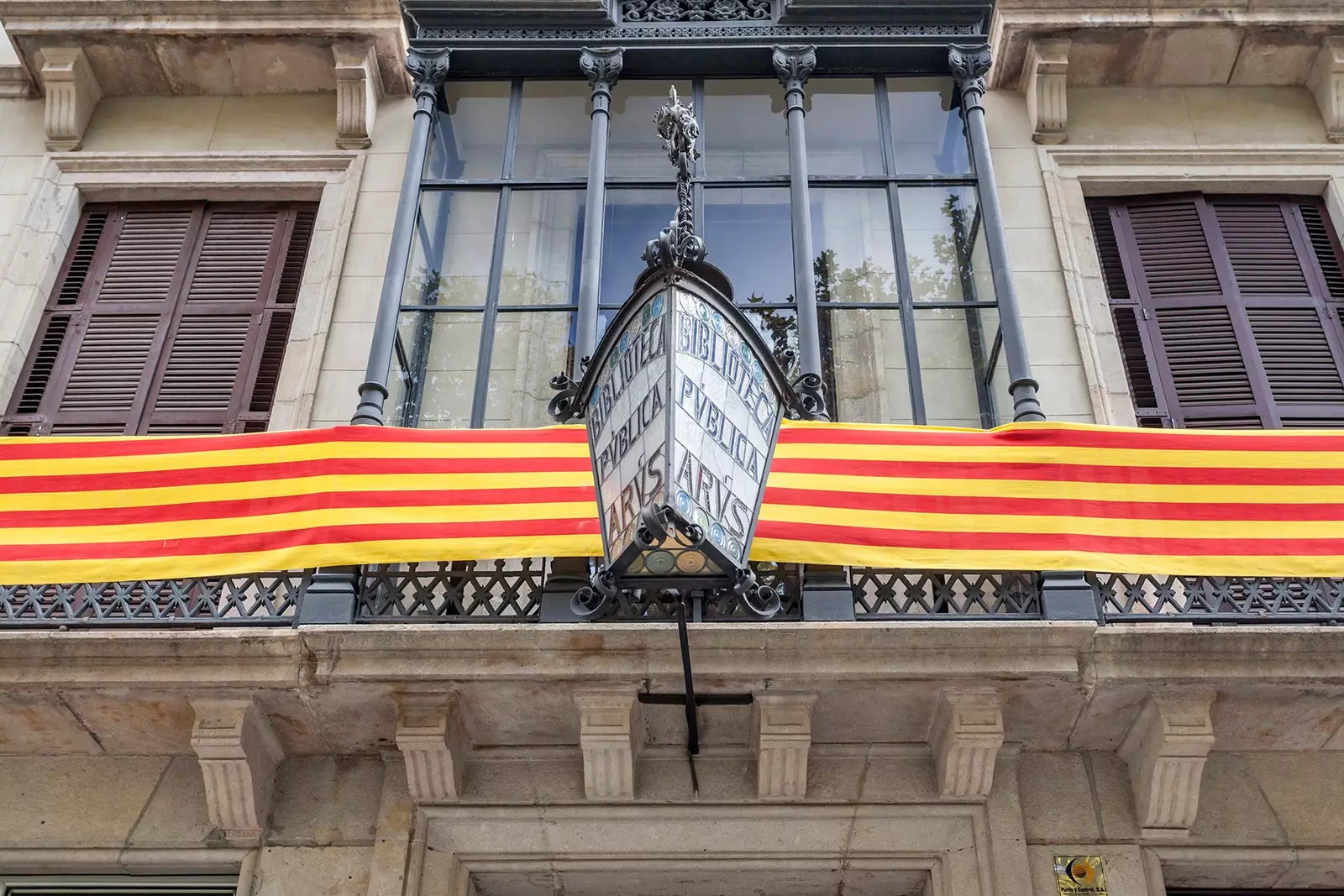
Arus Library
A revolution whose motto was Liberté, égalité, fraternity, an emblem that this society also shares and that, according to the Diario Masonico website, “It is of Masonic origin, not only because of the moral foundations that these words contain, but because Freemasonry considers them as emancipating and regenerating Principles of thinking beings and of the civil society where they live together”.
Now it's just a matter of connecting the dots and realizing that French Revolution and Freemasonry go hand in hand.
Its own members describe Freemasonry, where the word 'mason' comes from the French 'maçon' which means 'bricklayer', 'builder' and this, in turn, from the Germanic word 'makon' and whose meaning would be 'do', as a institution, essentially, philosophical, philanthropic and progressive, whose objective is the search for truth, the study of ethics and the practice of solidarity , while working to morally and materially improve humanity.
Today's Freemasonry is responsible, above all, for studying issues related to art, philosophy or literature. In Freemasonry there is only one condition: You can't talk about religion or politics.
Tradition claims that The origins of Freemasonry are located in Egypt , among the teachers and architects who directed the construction of the great pyramids. Others locate their beginnings in Israel. , in the construction of the Temple of Solomon, by Hiram of Tyre, supposedly the first mason.
However, the proven and most accepted historical origin places the beginnings of Freemasonry in the 13th century, coming from the guilds of medieval cathedral builders.
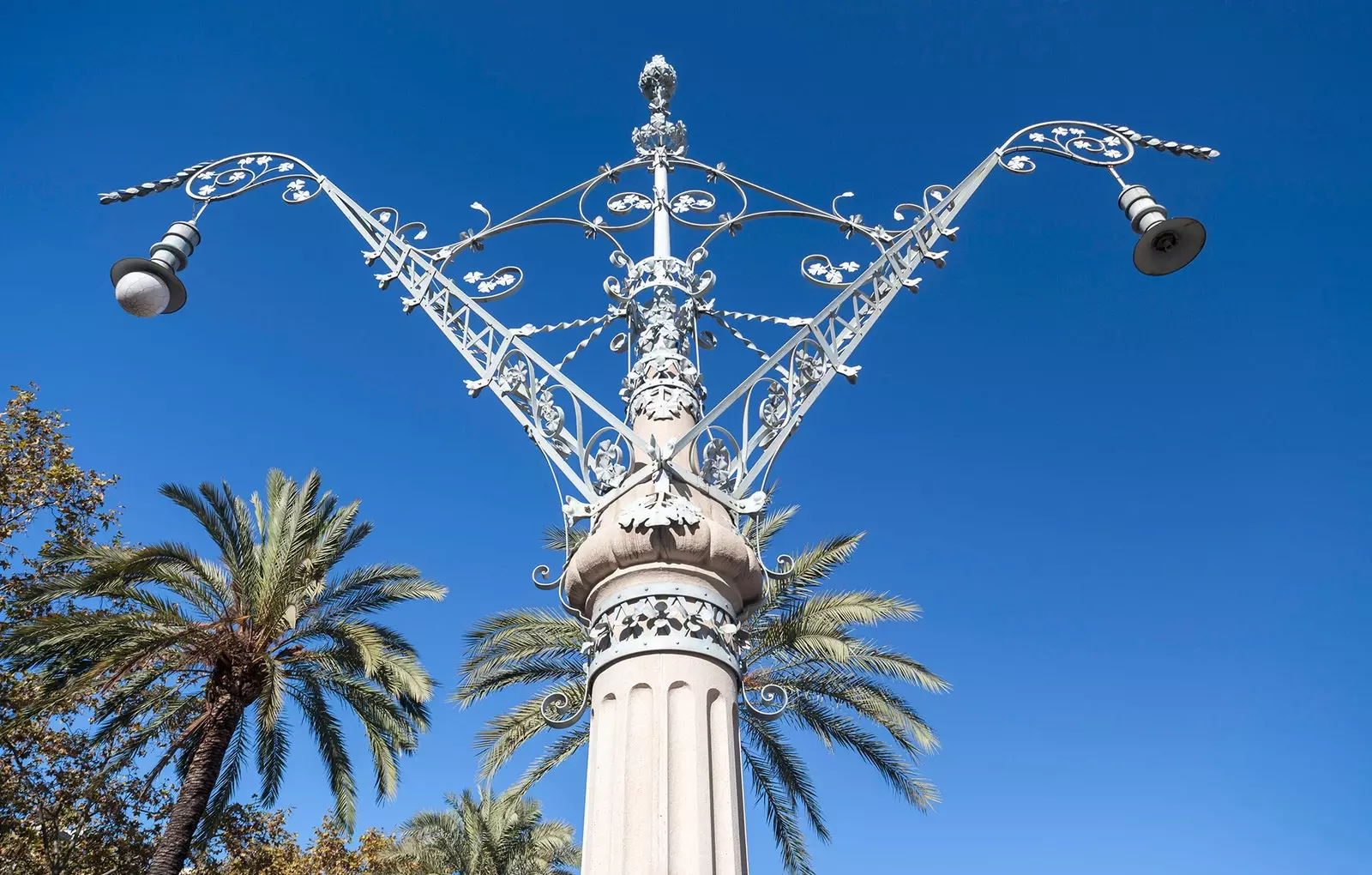
Lampposts of Passeig Lluís Companys
going down the Passeig Lluis Companys towards the Parc de la Ciutadella, we find a route marked by lampposts in the shape of compasses and squares, designed by the Masonic architect Pere Falqués. His mission was to welcome Masonic progress and the knowledge it brought. the Universal Exhibition of 1888 to the city.
Arriving at Parc de la Ciutadella through the entrance that leads to Passeig Lluís Companys, a sculpture of Hermes (Greek god of commerce and ingenuity) receives the visitor, but it is at the door that leads to Passeig de Picasso where Freemasonry makes its great staging, discreetly, of course.
There we meet the one known as the Castell dels Tres Dragons, a building by the architect Domenech i Montaner built between 1887 and 1888 as a café-restaurant for the Barcelona Universal Exposition of 1888.
Built with industrial materials such as exposed brick, iron or glass, in its highest part you can see shield-shaped panels that break down, in blue on white, a naturalistic theme of plants and animals, including a good number of drinks and liquors (remember that it was the exhibition cafeteria).
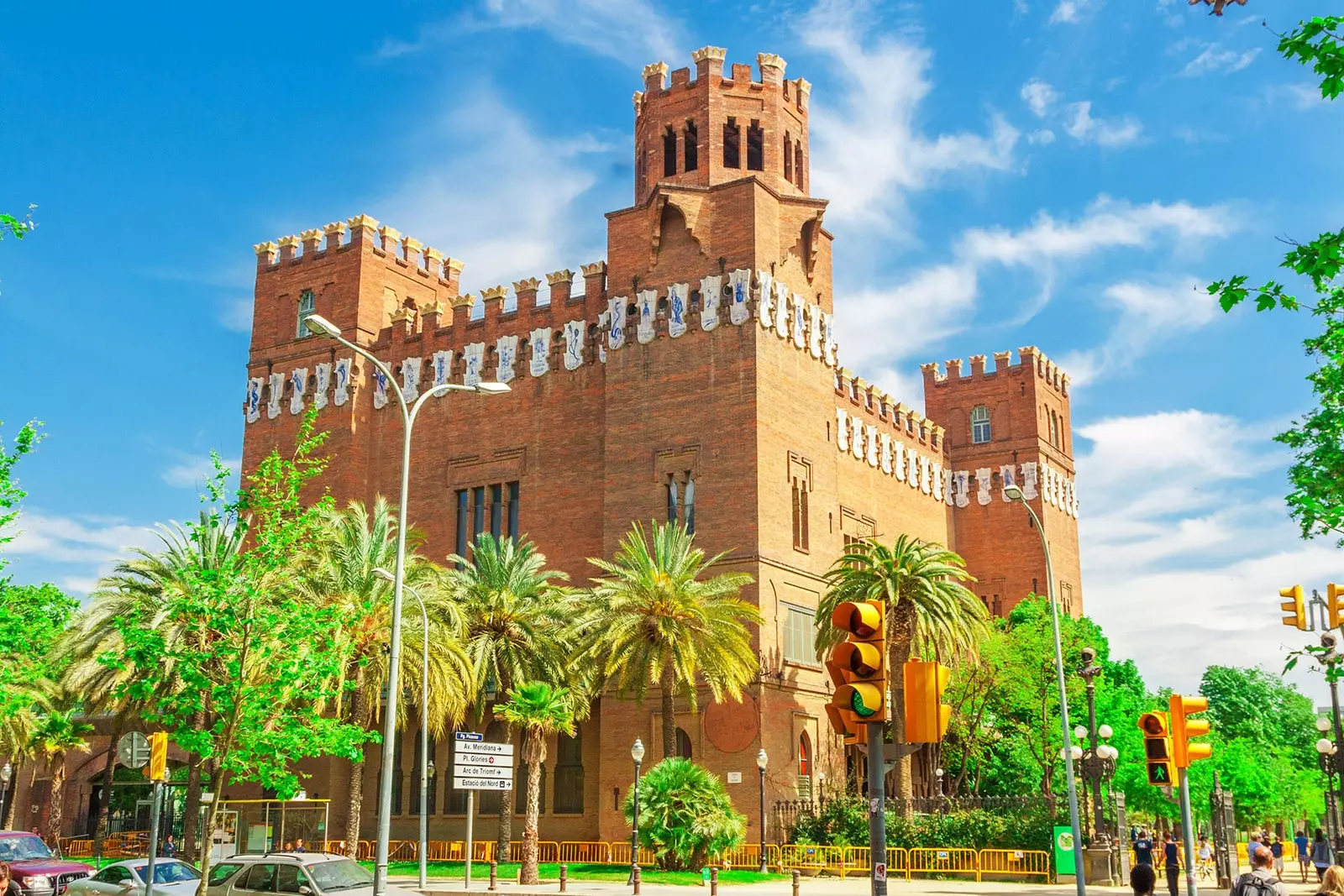
Castell dels Tres Dragons facade
In the middle of this campus stands out a starfish (animal that, like the masonic symbol, has five points) that contains a 'G' in the center. This letter is one of the great emblems of Freemasonry, as it refers to 'GADU', the Great Architect of the Universe , name with which God is designated as the first cause of the Universe.
Masonic symbology used to be visible to everyone, but in a hidden way, since it was a real risk to be discovered. Thus, secrecy and discretion they are, traditionally, part of the Masonic world. Like, for example, the use of a hand code when greeting each other to identify with each other.
Our next stop is right at the entrance of the Center Cívic Convent de Sant Agustí, a building whose door has several symbols that we are already identifying for ourselves: a square and a compass , which represents democracy; a tree , symbol of knowledge and truth in many religions; and a shield pierced by an arrow , victory symbol.
It could be understood as a message that tells us about the victory of the knowledge of Freemasonry. But that is just an interpretation. The architectural complex has two more entrances and both with the bracket pointing towards the central door, that is, on the right door of the convent the bracket points to the left.
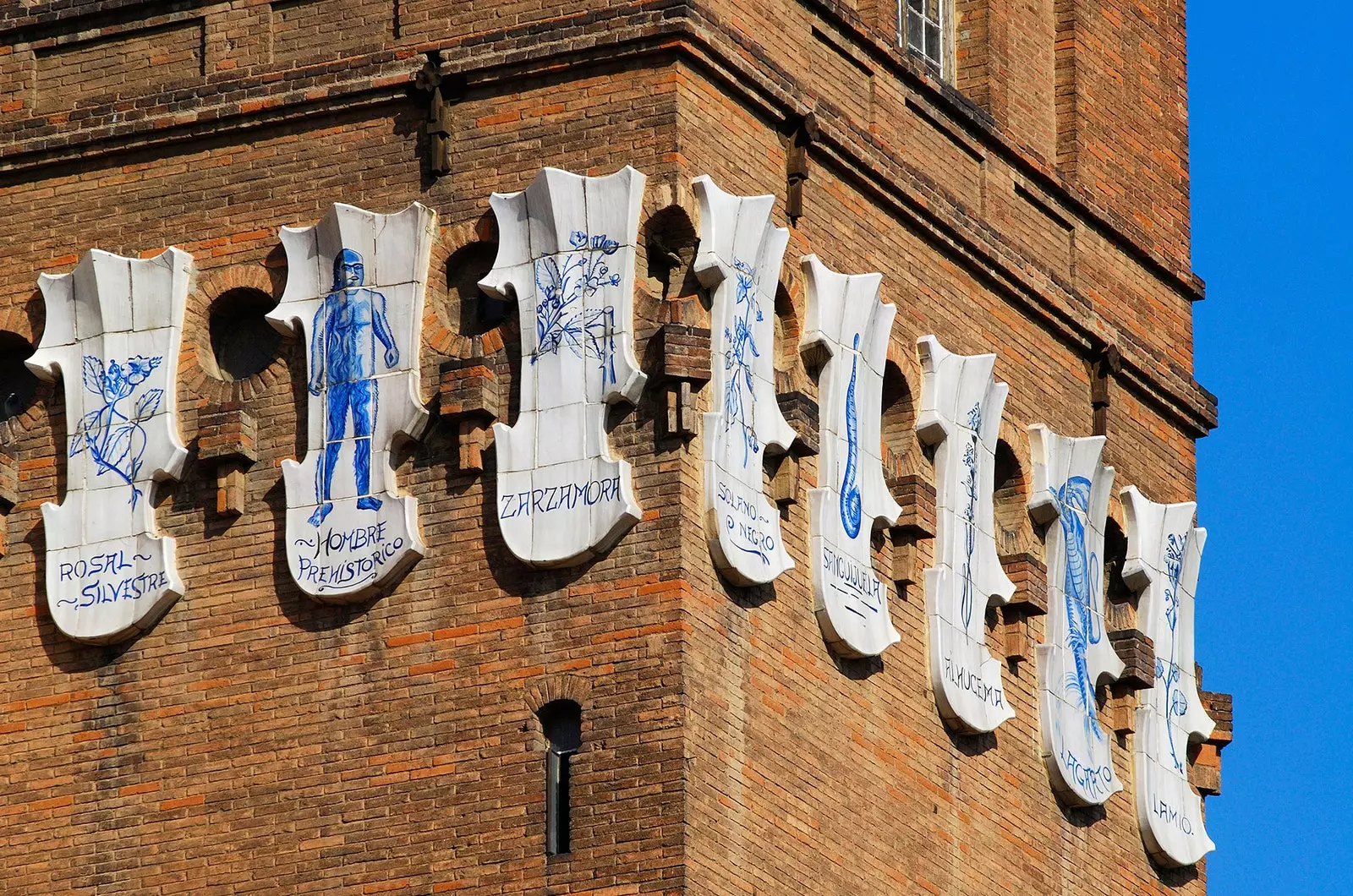
Detail of the Castell dels Tres Dragons building
However, at the left door, place where the Museu de la Xocolata is now located, the symbols were removed in Franco's time , and possibly pointed to the right. This gives us to understand that the central door it was the main entrance to the lodge who met there. It is believed that during the Napoleonic conquest a French garrison used to gather there.
We leave the narrow streets of El Born to head towards a sunnier part of the riverside.
In the Passeig de Isabel II is one of the most representative buildings of Barcelona, the Xifre House . Its owner, José Xifré i Casas, was the richest Catalan of the 19th century as he made a great fortune in Cuba and the United States. The house presents a series of medallions with outstanding characters and with mythological motifs to which many confer a masonic meaning.
To Josep Xifré he was interested in everything that did not smack of Christian tradition, so you can see images like a caduceus, signs of the zodiac, the horn of plenty, the god Neptune and, standing out from the others, the goddess Urania shows us a curious clock that only shows the numbers 12, 1, 2, 3, 6, 9. Adding them all, the result is 33, the masonic number par excellence.
But if there is a truly remarkable point in the Masonic history of Barcelona in this building is the ** Restaurant 7 Portes **, which is located in the lower part of Casa Xifré.
Upon entering it may not seem like it, but his checkered floor betrays him , because in a public building it is a symbol of having been lodge meeting place, as it happens in the Arús Library.
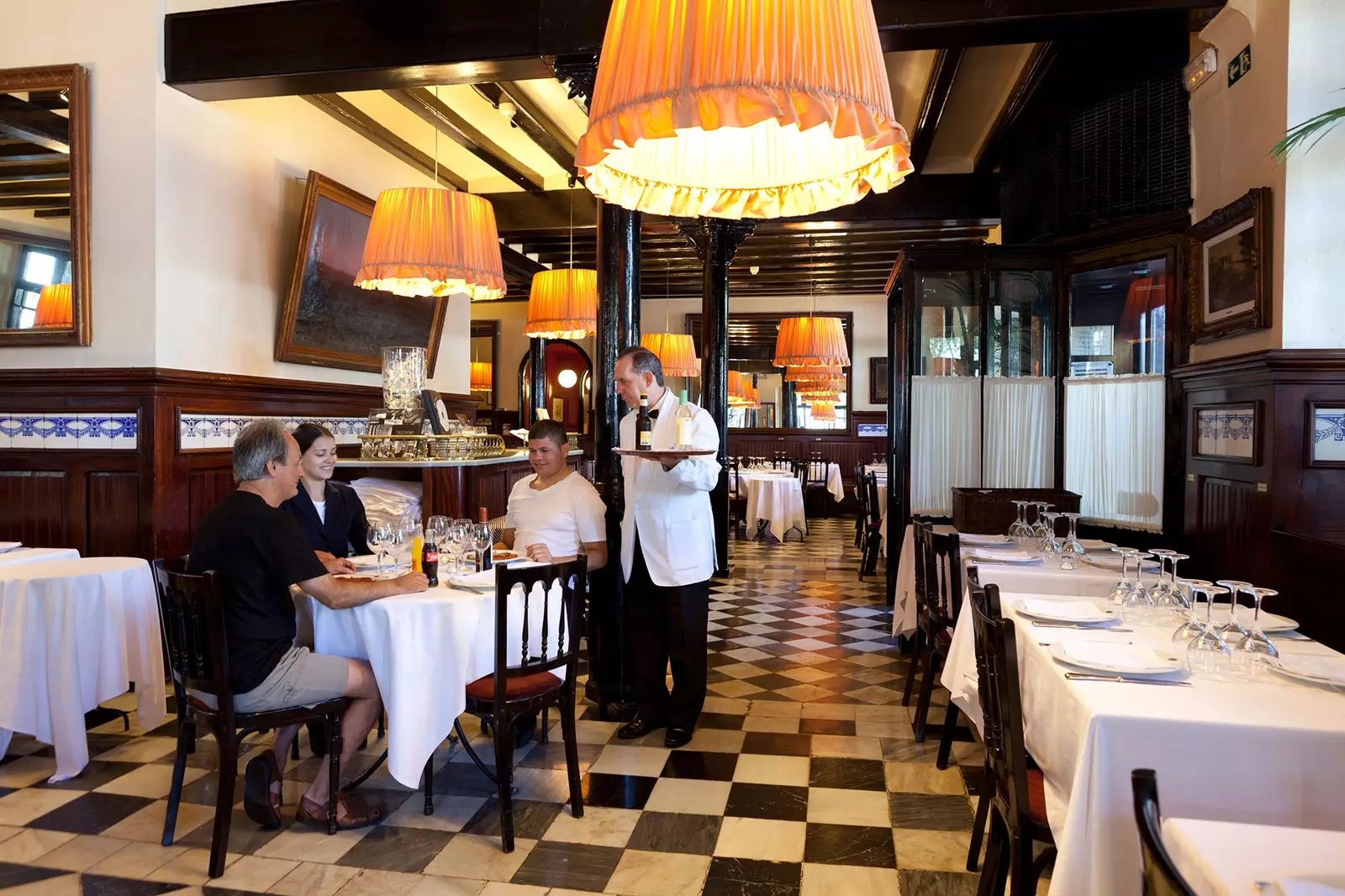
Interior of the 7 Portes Restaurant
In addition, it is believed that the number seven that carries the name of the premises is related to Freemasonry, since its shape resembles the magic key that opens all the doors of knowledge. In another order of things, the restaurant was the first in the city to have running water and the first photograph in Spain was taken there.
In the Gothic Quarter, the House of the Canons It served, as its name indicates, as a house for the regular canons of the Barcelona Cathedral and above its front door, two angels hold a shield with certain Masonic symbols : a compass, which represents the technique; shooting stars, symbolizing daring and innovation; and a rose, which speaks of beauty, but also warns of the sub rosa secret: the things that are said there, stay there.
Finally, we head towards number 11 Carrer de la Portaferrissa, one of those narrow and gloomy alleys that start from the Rambla and where a curious building, currently a hostel, greets us with a wide display of masonic symbols that at this point in our route we are already more than capable of locating and associating effortlessly: triangle, square, trowel, compass, tree, star and roses, among others.
Our route through Masonic Barcelona ends here, but the city is full of buildings and corners that maintain the imprint of this society. And now that you know how to identify them, maybe it's time to take your own tour behind its symbols and history.
Could you start, for example, with the famous Park Güell, well They say that its creator, the even better known Antoni Gaudí, was a Freemason and he left numerous initiation symbols scattered throughout the park. Do you see yourself able to find them?
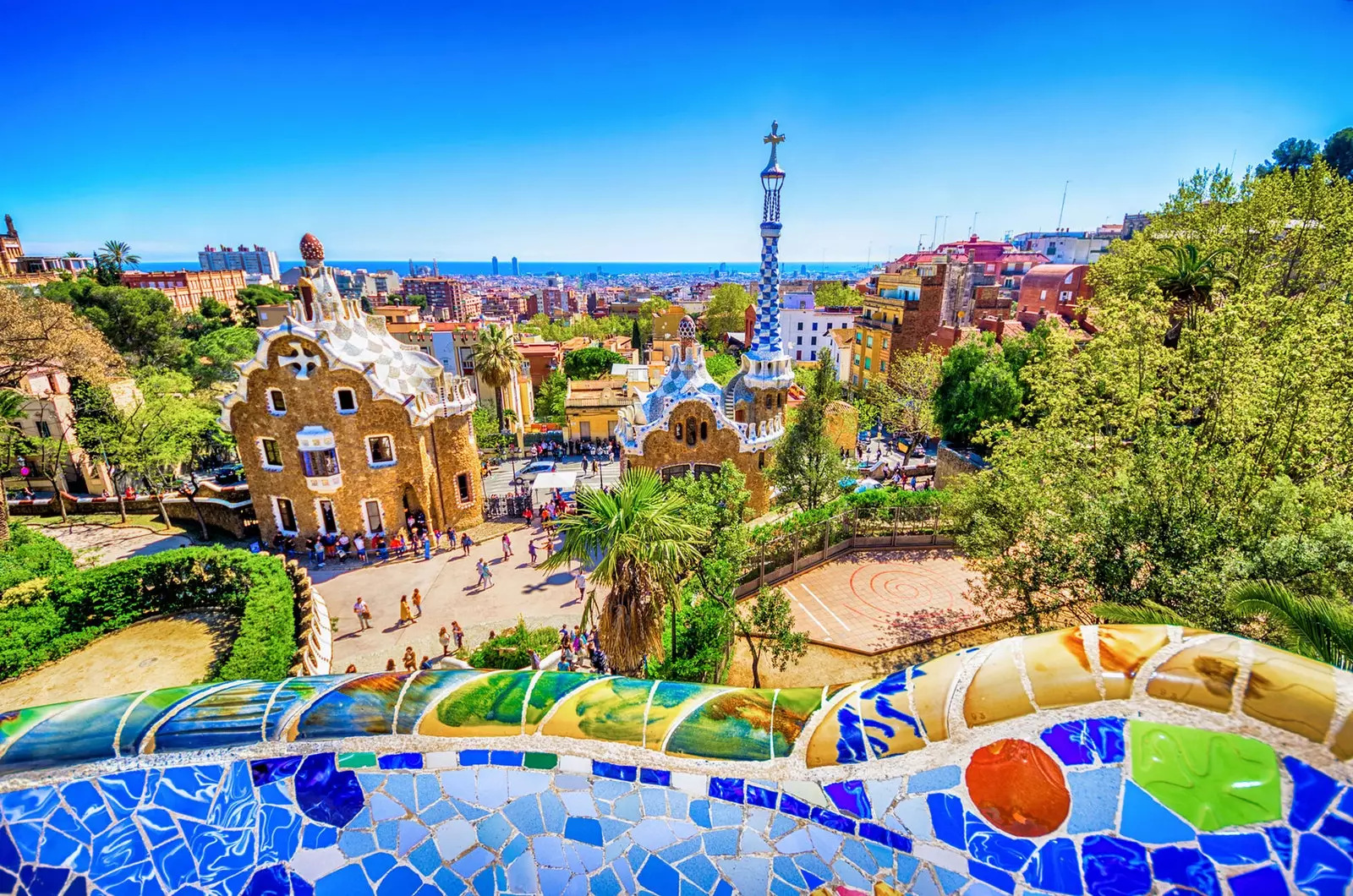
Do you see yourself able to find them?
